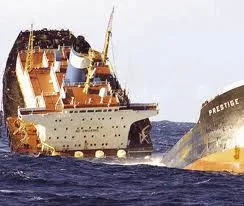Turkey’s first nuclear power plant to be built on the country’s southern coast will connect Turkey and Russia for at least 100 years, said the plant’s Russian builder, Rosatom.
“We are giving 60 years of guarantee for the Akkuyu nuclear plant, but I’m sure that it will have a lifespan of 80-100 years,” said Rosatom CEO Sergei Kirienko.
“We signed an agreement that undertakes mutual commitments for over 100 years,” he also added, speaking to the media in Moscow on Nov. 29.
Rosatom, Russia’s state-run atomic energy corporation, signed an agreement with Turkey in 2011 to build and operate a four-reactor nuclear power plant in the Mersin province on Turkey’s Mediterranean coast.
“Russia will provide $4 billion from its state budget for this project. We will not reduce the financial support of this project,” Kirienko said.
“Russian and Turkish investors will be preferred at first. The project is expected to draw 50-70 percent of investment. This will happen through investors mostly, not bank loans,” he added.
Training support
The Akkuyu plant, which is a sister project to Russia’s Novovoronezh plant in Voronezh Oblast, central Russia, will require $22 billion with construction beginning in 2016 and it becoming operational in 2020.
Kirienko said the use of Russian expertise and technology for Turkey’s first nuclear power plant is a sign of “trust” for Russia, adding that the plant is significant for the strategic cooperation between the two countries, while it will contribute to Turkey’s energy needs.
Recalling that Russia is giving nuclear energy training to 250 Turkish experts, Kirienko emphasized that Russia will help Turkey with the technical and infrastructural aspects.
[hurriyetdailynews.com]
30/11/14
--
-
Related:

“We are giving 60 years of guarantee for the Akkuyu nuclear plant, but I’m sure that it will have a lifespan of 80-100 years,” said Rosatom CEO Sergei Kirienko.
“We signed an agreement that undertakes mutual commitments for over 100 years,” he also added, speaking to the media in Moscow on Nov. 29.
Rosatom, Russia’s state-run atomic energy corporation, signed an agreement with Turkey in 2011 to build and operate a four-reactor nuclear power plant in the Mersin province on Turkey’s Mediterranean coast.
“Russia will provide $4 billion from its state budget for this project. We will not reduce the financial support of this project,” Kirienko said.
“Russian and Turkish investors will be preferred at first. The project is expected to draw 50-70 percent of investment. This will happen through investors mostly, not bank loans,” he added.
Training support
The Akkuyu plant, which is a sister project to Russia’s Novovoronezh plant in Voronezh Oblast, central Russia, will require $22 billion with construction beginning in 2016 and it becoming operational in 2020.
Kirienko said the use of Russian expertise and technology for Turkey’s first nuclear power plant is a sign of “trust” for Russia, adding that the plant is significant for the strategic cooperation between the two countries, while it will contribute to Turkey’s energy needs.
Recalling that Russia is giving nuclear energy training to 250 Turkish experts, Kirienko emphasized that Russia will help Turkey with the technical and infrastructural aspects.
[hurriyetdailynews.com]
30/11/14
--
-
Related:
Related:
Σιγή ιχθύος από την Κομισιόν, για το πυρηνικό στο Ακουγιού
Τα σχέδια του Άκουγιου: Του χρόνου ξεκινά η κατασκευή του πρώτου πυρηνικού σταθμού της Τουρκίας
He also stated that no construction work for the power plant to be built in Akkuyu, southern Mersin province, had started. (2013)

















 GR
GR FR
FR DE
DE ES
ES IT
IT RU
RU EU
EU